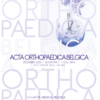Biochemical and biomechanical influence on peri anchor cyst formation in rotator cuff repair
Peri anchor cyst; rotator cuff; rotator cuff tear; arthroscopy; shoulder
Published online: Feb 17 2023
Abstract
This review aims to provide a detailed analysis of the pathological processes underlying peri anchor cyst formation. As a consequence providing methods that can be implemented to reduce cyst occurrence and also to highlight areas of current weakness in the literature that could be strengthened so as to improve our ability to manage peri anchor cyst formation.
We performed a literature review of the National Library of Medicine focused around rotator cuff repair and peri anchor cysts. We summarise the literature whilst incorporating a detailed analysis of the pathological processes underpinning peri anchor cyst formation.
There are two theories behind peri anchor cyst occurrence, biochemical and biomechanical. It is our belief that cyst formation occurs as a result of both. The biochemical make up of an anchor plays a crucial role in cyst occurrence and it’s timing post-operatively. Consequently anchor material plays a vital role in peri anchor cyst formation. Tear size, degree of retraction, number of anchors and varying bone density within the humeral head are all important biomechanical factors.
Further investigation is required into certain aspects of rotator cuff surgery to improve our understanding of peri anchor cyst occurrence. From a biomechanical perspective these include: Anchor configuration to both the tear and each other and also tear type itself. From a biochemical perspective we need to further investigate the anchor suture material. It would also be of benefit if a validated grading criteria of peri anchor cysts was produced.
